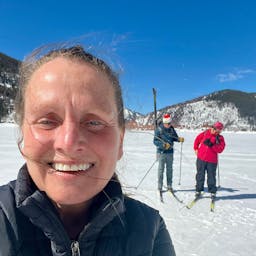Beth Klein Boulder Attorney Muses About Synthetic Ivory
May 28, 2019
Story
Last night I had a dream about replacing natural ivory with a synthetic. (As I regress to my kindergarten self, my imagination is getting stronger and my curiosity is off the charts.) After all, we have perfect synthetic diamonds, synthetic fish, and synthetic fur. Why not synthetic ivory – chemically identical and pure? Vegan ivory? Sustainable ivory? A business forwomen and girls?
I am posting this to find a team to explore this idea. Please contact Beth KleinBoulder Attorney if you are interested in this exploration and project.
The ivory trade is the commercial, often illegal trade in the ivory tusks of the hippopotamus, walrus, narwhal, mammoth, and most commonly, African and Asian elephants. The chemical structure of the teeth and tusks of mammals is the same, regardless of the species of origin.
Legal hunting and illegal poaching of elephants is big business. Despite preserving lands and having armed guards (both great ideas), poachers are still killing elephants at an extinction pace because of the demand. But there is a darker side to this trade that fuels militant Islamic groups.
Elephant Action League (EAL) recently completed a two-year investigation into illegal poaching in Africa. And it led to al-Shabab, the Islamic militant group in Somalia that raided and occupied Nairobi’s Westgate Mall for several days last month.
Al-Shabab is buying illegal ivory from poachers, says EAL. They documented an estimated one to three tons of ivory going into Somalia each month through al-Shabab traders. That is “enough to fund of up to 40 percent of the monthly salary of Shabab’s estimated 5,000 fighters.”
“And they really need money, because many of the low-level Shabab people are driven by money concerns, as much as ideology,” he said. “For Shabab, ivory is just a commodity, like kidnapping, like charcoal, like shaking down small business owners. Compared to other kinds of sources, it’s a relatively easy source of funding, so thousands of people will risk their lives to get it.”
EAL says that poaching has a more profound effect on people than most suspect.
“The human toll of the ivory trade is much wider and deeper than al-Shabab. It’s not just about terrorists making money, it’s not just about the rangers dying trying to protect the elephants and the rhinos and other wildlife. It’s about entire local communities getting exploited by this market. It’s about widows and orpans, it’s about child soldiers, it’s about weapons bought to poach,” he said. “I think it’s time for the international community to face the broad spectrum of those side effects of the ivory trade.”
Tusks are used for decoration and remedies. What if, we could duplicate the formula and satisfy the market with a man-made ivory. Ivory keys on pianos have been replaced. Plastics worked for a while. Why not evolve?
Ivory consists mainly of dentine (inorganic formula Ca10(PO4)6(CO3)·H2O, one of the physical structures of teeth and tusks. We know the 3D layering of the structures of different animals. Tusks have a minor peripheral component, the cementum, a soft derivative of enamel, and a main core of dentine which is ivory. Dentine is composed of a matrix of particles 5-20 microm in diameter in a ground substance containing dentinal tubules about 5 microm in diameter with a center to center spacing of 10-20 microm.So much work has been done.
Who can make Ca10(PO4)6(CO3)·H2O in shapes of enormous trophy sized tusks? Bigger than what is natural?
Can manufacturing of Ca10(PO4)6(CO3)·H2O jobs be created to replace hunting and poaching?
Can a market for synthetic ivory be created in the countries that demand the product as the better alternative?
Who knows the right people to bring this into existence and see what impact we can have?
Please contact Beth Klein, Boulder Attorney.
How to Get Involved
Contact Beth Klein Boulder Attorney




